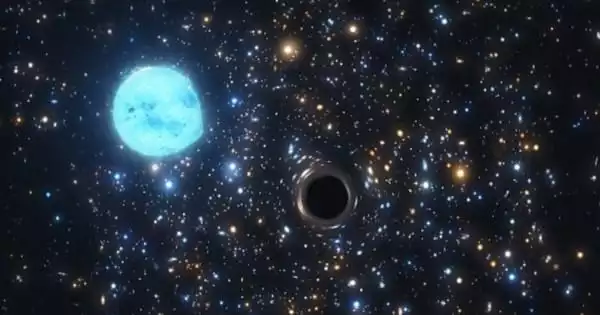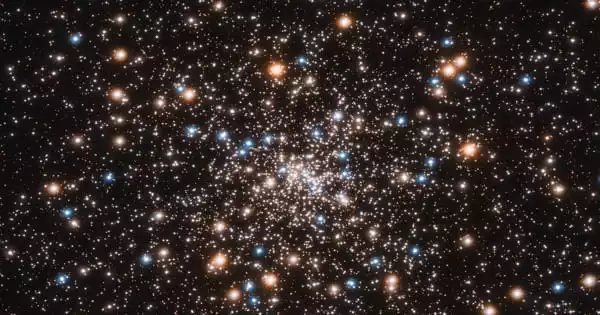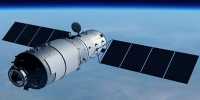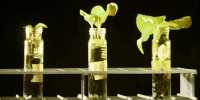Astronomers discovered a small black hole outside the Milky Way by studying how it affects the motion of a nearby star. This is the first time this method has been used to detect the presence of a black hole outside our galaxy. The method could be crucial in revealing hidden black holes in the Milky Way and nearby galaxies, as well as in shedding light on how these enigmatic objects form and evolve.
Astronomers discovered a small black hole outside the Milky Way using the European Southern Observatory’s Very Large Telescope (ESO’s VLT) by studying how it influences the motion of a star in its vicinity. The newly discovered black hole was discovered lurking in NGC 1850, a cluster of thousands of stars roughly 160,000 light-years away in the Large Magellanic Cloud, the Milky Way’s neighbor galaxy.
“Like Sherlock Holmes following a criminal gang’s missteps, we’re looking at every single star in this cluster with a magnifying glass in one hand, trying to find some evidence for the presence of black holes but without directly seeing them,” says Sara Saracino of the Astrophysics Research Institute of Liverpool John Moores University in the UK, who led the research, which has been accepted for publication in Monthly Notices of the Royal Astronomical Society. “The result shown here represents only one of the wanted criminals, but once you’ve found one, you’re well on your way to discovering many more, in various clusters.”
We discovered a small black hole outside the Milky Way using the European Southern Observatory’s Very Large Telescope by studying how it influences the motion of a star in its vicinity. Every single detection we make will be critical for our future understanding of stellar clusters and the black holes that reside within them.
Sara Saracino
The team’s first “criminal” was discovered to be roughly 11 times the size of our Sun. The gravitational influence of the black hole on the five-solar-mass star orbiting it was the smoking gun that led astronomers to it.
Astronomers have previously detected such small, “stellar-mass” black holes in other galaxies by detecting the X-ray glow emitted as they consume matter or the gravitational waves produced when black holes collide with one another or with neutron stars.
However, most stellar-mass black holes do not emit X-rays or gravitational waves, indicating their presence. “The vast majority can only be revealed dynamically,” says Stefan Dreizler, a team member based at Germany’s University of Göttingen. “When they form a system with a star, they will affect its motion in a subtle but detectable way, allowing us to locate them using sophisticated instruments.”

Saracino and her team’s dynamical method could help astronomers discover many more black holes and unravel their mysteries. “Every single detection we make will be critical for our future understanding of stellar clusters and the black holes that reside within them,” says study co-author Mark Gieles of the University of Barcelona in Spain.
The discovery of a black hole in NGC 1850 is the first of its kind in a young star cluster (the cluster is only around 100 million years old, a blink of an eye on astronomical scales). Using their dynamical method in similar star clusters could reveal even more young black holes and shed new light on their evolution. Astronomers would be able to understand how these objects grow by feeding on stars or merging with other black holes if they were compared to larger, more mature black holes in older clusters. Furthermore, studying the demographics of black holes in star clusters helps us better understand the origins of gravitational wave sources.
The team used data collected over two years with the Multi Unit Spectroscopic Explorer (MUSE) mounted at ESO’s VLT in Chile’s Atacama Desert to conduct their search. “MUSE enabled us to observe densely packed areas, such as the innermost regions of stellar clusters, by analyzing the light of every single star in the vicinity. The end result is information about thousands of stars in a single shot, which is at least ten times more than any other instrument “Sebastian Kamann, a long-time MUSE expert based at Liverpool’s Astrophysics Research Institute, is one of the co-authors.
This enabled the team to identify the odd star whose peculiar motion indicated the presence of the black hole. They were able to measure the mass of the black hole and confirm their findings thanks to data from the University of Warsaw’s Optical Gravitational Lensing Experiment and the NASA/ESA Hubble Space Telescope.
The Extremely Large Telescope (ELT) in Chile, which is set to go operational later this decade, will allow astronomers to discover even more hidden black holes. “The ELT will undoubtedly revolutionize this field,” Saracino predicts. “It will allow us to observe stars that are much fainter in the same field of view, as well as look for black holes in globular clusters that are much farther away.”














